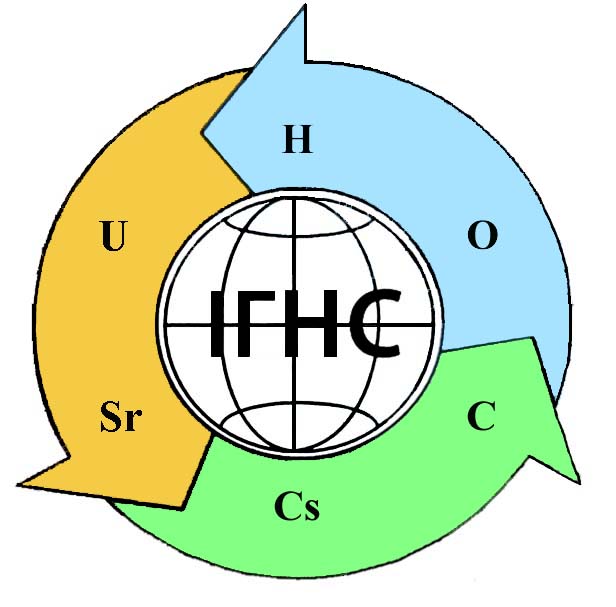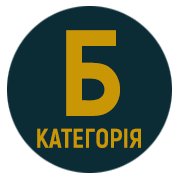ECOLOGICAL ASPECTS OF DISPERGATION OF MAGNETITE QUARTZITE’S OF KRYVYI RIH BASIN IN THE PROCESS OF ORE BENEFICIATION
DOI:
https://doi.org/10.32782/geotech2022.35.06Keywords:
magnetite quartzites, ore beneficiation, dispergation, wet magnetic separation, mineral degradation, environmental safetyAbstract
Using XRF, TG-DTA, and chemical analysis of the products of processing of magnetite quartzites from the N Ore Processing Plant of Krivorozhye, changes in the phase and chemical composition of samples of four stages of magnetic separation and tailings were traced compared to a sample of the raw ore, and the potential impact of the dispersion process on the environment was revealed. Thermogravimetric studies indicate phase transformations of magnetite to maghemite (250–340°C), polymorphic transformations of iron oxides and destruction of rock-forming minerals (430–480°C), conversion of quartz to alpha form (564–568°C), dehydroxylation of iron and magnesium oxyhydroxides (385°C), conversion of alpha quartz to beta – cristobalite (970°C). In the process of enrichment, there is an increase in the loss of mass of the samples, which is 0,06% (I), 1,46% (II), 1,9% (III), and 2,6% (IV). According to X-ray diffraction, the main ore mineral is magnetite, the rock-forming mineral is quartz. Among the secondary minerals are sulfides, cummingtonite, actinolite, and others. It is shown that at the first stage of enrichment all primary and secondary minerals are present in the samples, at the 2nd stage sulfides disappear from the sample, at the 3rd stage secondary minerals disappear, and at the 4th stage quartz remains in the sample and it forms aggregates with magnetite. The parameter of the crystal lattice of magnetite varies between 8,397–8,403 nm, its coherent scattering region is 31,4–35,6 nm. It is found that in the course of ore grinding the destruction of secondary minerals takes place with the removal of destruction products, as evidenced by the occurrence of disperse quartz in the tailings. Analysis of the chemical composition of the dispersion products indicates that Si, Ca, and Na accumulate in the tailings, whereas Ti is removed, and could potentially enter the environment. It is shown that the tailings and separation products increase the content of Zn, and the tailings accumulate environmentally hazardous As, and Nb. At the same time, the concentrations of other elements remain stable at all stages of processing.
References
Andreev, E.E., Tihonov, O.N. (2007). Crushing, grinding and preparation of raw materials for enrichment: textbook. St. Petersburg: St. Petersburg State Mining Institute (Technical University), 439 p.
Bulach, F.V., Bulach, O.A. (2016). Improving the enrichment efficiency of oxidized ores of Kryvbas. Mining Journal of Kryvyi Rih National University, 101: 174–178. Retrieved from: http://iomining.in.ua/en/homeen/journal/101en/#101.
Korzhnev, M.M. (ed.) (2005). Ecological geology: textbook. Kyiv: Kyiv University Press, 257 p.
Glembockij, V.A., Bekhtle, G.A. (1964). Iron ore flotation. Moscow: Nedra, 224 p.
Gubin, G.V., Tkach, V.V., Gubin, G.G. (2000). Electrokinetic Phenomena and Dislocation Mechanism of Ores Destruction during Grinding. Razrabotka rudnyh mestorozhdenij: nauchno-tekhnicheskij sbornik, 72: 57–61.
Hodakov, G.S. (1972). Physics of grinding. Moscow: Nauka, 307 p.
Klyarovskij, V.M., Gusev, G.M., Arhipenko, D.K. et. al. (1965). Experience in modeling the weathering process of mica. Quantitative analysis of minerals and rocks by physical methods. Novosibirsk, pp. 63–74.
Kochegarov, G.G. (2016). Changes in the substructure of dispersed minerals. Environmental influence. Kondensirovannye sredy i mezhfaznye granicy, 1(18): 56–60.
Lyutoev, V.P., Silaev, V.I., Ponomarenko, A.N., Brik, A.B., Dudchenko, N.A., Yushin, A.A., Lysyuk, A.Yu., Shevchuk, S.S. (2013). Transformation of the structure of natural iron oxides/oxyhydroxides as a result of external factors. Vestnik Instituta geologii Komi nauchnogo centra Ural’skogo otdeleniya RAN, 1(217): 20–25.
Pirogov, B.I., Porotov, G.S., Kholoshin, I.V., Tarasenko, V.N. (1988). Technological mineralogy of iron ores. Leningrad:
Nauka, 304 p.









